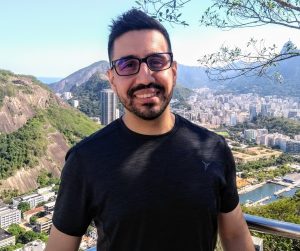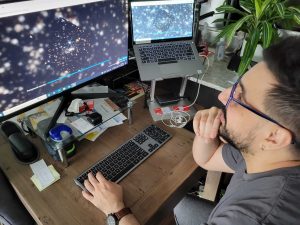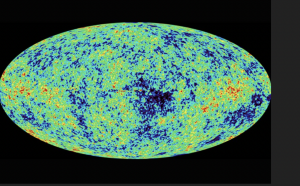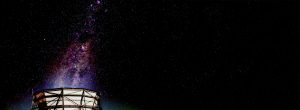Louis was born in Rio de Janeiro, Brazil, and immigrated to Canada in 2014. He is starting his second year at U of T as a transfer student after several years working as a software developer. He plans to major in Astronomy and Astrophysics.
Outside of work, Louis is often pondering the implausible chances for most alien species in Star Trek to be humanoids.
What made you decide to participate in SURP?
I thought it would be an incredible opportunity to get hands-on experience doing scientific research, while also using some of my programming background to help answer questions in astronomy.
After being away from university for so many years, I was worried that my current knowledge of mathematics and physics would present a major roadblock for the research. However, I was wrong. The program and my supervisors have provided an amazing environment for learning, exploring, and asking questions. And I have many questions!
What is your favourite thing about SURP?
The best part of my research is having access to measurements made by a six-metre ground telescope. The amount of effort and time that goes into specifying, building, and operating such devices is astonishing. It is a humbling experience to use the telescope data knowing that hundreds of people from different continents worked together for several years to make this a possibility. It truly takes a village!
The seminars are also a highlight of the program. The speakers have covered a wide variety of topics in astronomy and other academic related themes, such as work/life balance and how to build an effective CV. My favourite one so far was how to give memorable presentations.
Can you tell us about your research project?
I am working on the project “Time domain science with Cosmic Microwave Background (CMB) radiation data” under the supervision of Dr. Yilun Guan and Prof. Adam Hincks. In this project we are using data from the Atacama Cosmology Telescope in Chile to try to detect pulsars that “glow” in the microwave part of the electromagnetic spectrum.
The project is exciting for several reasons. First, time domain science with CMB data is a new subfield in astronomy and the work we are doing could pave the way for future projects. The other reason is that neutron stars are usually probed using radio frequencies, so studying them at a different wavelengths could bring new insights on the extreme physical environment inside and surrounding those stars.
Can you explain how SURP has perhaps been different from your undergrad work?
Since I restarted university last year, there has been a big gap between what I am currently studying in undergrad and what I have been learning for the project. However, my supervisors have been kind and patient, and will explain (and re-explain) topics that I am not familiar with yet. To bridge this gap is also a source of motivation for myself, especially when things don’t go as planned during the academic semesters.
What are your plans for the future?
I would like to work with astronomy education and public outreach. In particular, I am interested in developing interactive tools and visuals to help others without a strong background in mathematics or physics to better understand the Universe and our place in it.
Such tools could be extremely useful to students from underserved communities without access to a formal education in science and astronomy. This issue is close to my heart because I have always struggled with exact sciences and a career in astronomy would have been nearly impossible if I had stayed in Brazil.
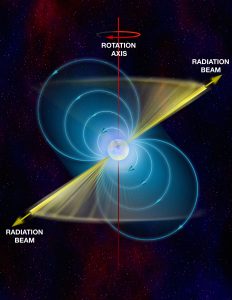
Artist’s interpretation of a pulsar. Credit: B. Saxton, NRAO/AUI/NSF.
More SURP Student Spotlight profiles for 2022 can be found at: dunlap.utoronto.ca/2022-surp-student-spotlight-archives.

